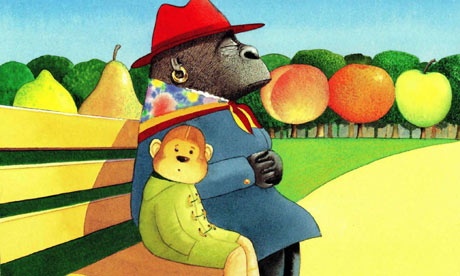
The fact that children love the art of Anthony Browne, who has just become the new children's laureate, is proof that childhood is far more sensitive, discerning, visually acute and emotionally rich than adults often imagine. Look at a bookshop rack of children's picture books and nine out of 10 have a similar look: bright, crude illustrations, as if kids wanted to see bland, adult versions of children's art, all beaming orange farmyard animals.
Browne is very different: an original who pursues his own demons, often through gorilla characters portrayed in a style at once hyperreal and unreal – and oddly melancholic.
Browne makes the inspirations of his style explicit in his book Willy the Dreamer, in which a gorilla dreams a series of fantastic adventures that pay homage to different artists of the surrealist movement. The frontispiece is a René Magritte-like blackboard with a gorilla's head captioned "boat", a book marked "shoe", a chair labelled "flag" ... and a banana called "banana".
Magritte seems to be Browne's biggest inspiration in modern art. The whole mood of his images, at once ordinary and mysterious, is reminiscent of the great Belgian painter. Other art heroes acknowledged in Willy the Dreamer include Henri Rousseau, Vincent Van Gogh and Sir John Tenniel, the Victorian illustrator of Alice in Wonderland.
But Browne is an original. All the best children's writers and artists pursue their own emotional depths; they don't patronise those younger than themselves. Browne has a brave determination to follow his own obsessions, and perhaps his masterpiece as an artist is the work that makes least concession to what others might expect to see in a children's book.
This is his picture book Anthony Browne's King Kong. In this daring work, Browne recreates the original black and white film for children – without conceding to modern taste, or banalising its content. It's all here: the battles with dinosaurs, the gas bombs, the tragic ending. Browne revels empathically in the sadness of Kong and reveals the fairytale at the heart of the story. Visual clues and jokes let young eyes see more than adults' in this surrealist classic. There's a touch of genius to it.

